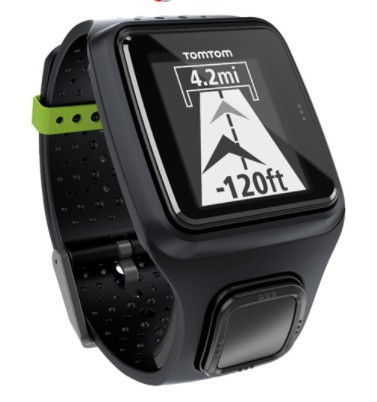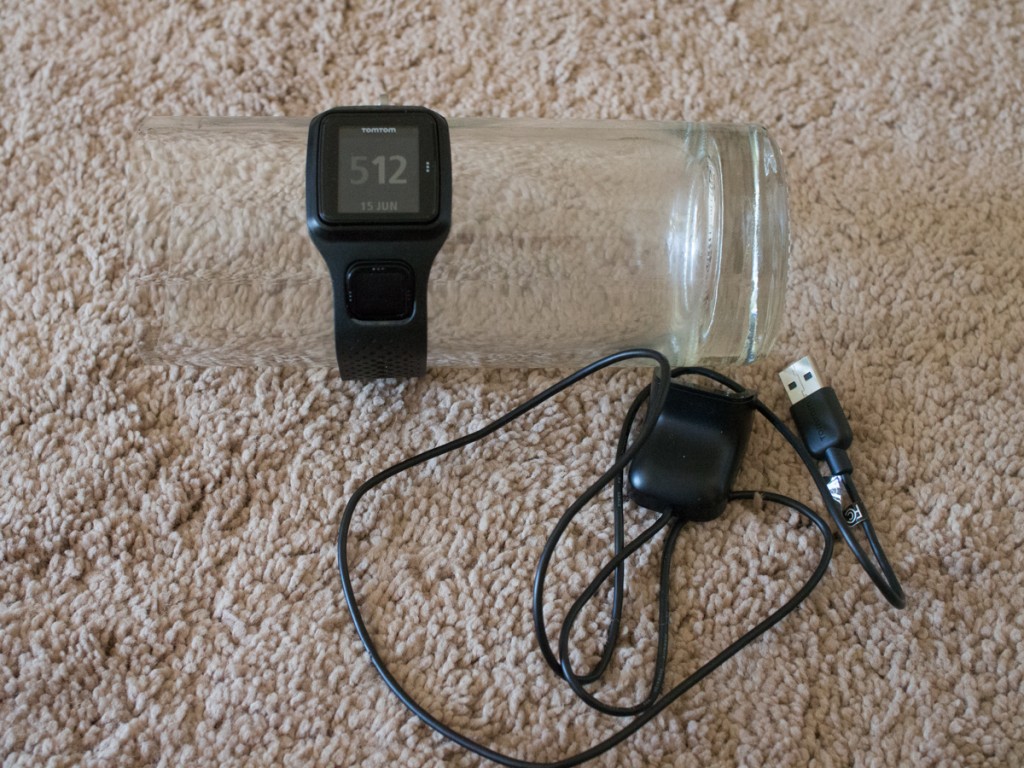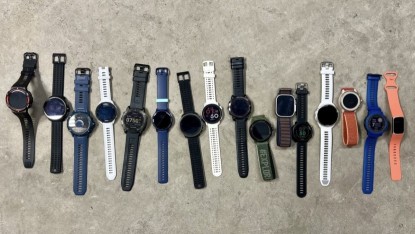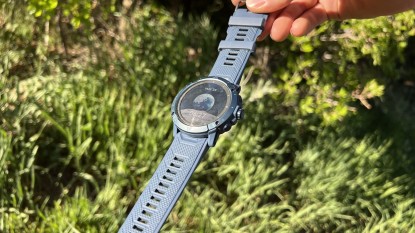TomTom Runner Review
Our Verdict
Our Analysis and Test Results
TomTom isn't a “household name” among athletes. This should change, with their Runner watch, and whatever may evolve from here forward. The Runner isn't a top scoring product, but it has some features and performance attributes that warrant notice, along with a budget-friendly price tag.
Performance Comparison
Ease of Use
In general, we assess the ease of use of a product by two main characteristics. We want to readily access and view a modicum of data and navigate options on the device itself, and then we want the device's accompanying phone or PC data management system to be clean, comprehensive, and quick. TomTom equips the Runner watch with a “joystick” style navigation tool. For a watch, this is interesting and unique.
With vibrating feedback and intuitive left-right, up-down options, navigating the on-watch menus and options is clean and straightforward. The TomTom phone apps are simple and clean, once you get the right one. TomTom divides their phone apps into a couple of different categories. A quick scan of the Apple app store, for instance, reveals six different TomTom apps. We know from experience that at least two of these work with the Runner watch. Our main tester initially downloaded the TomTom Golfer app, thinking that, due to some app store search issues, this was the only option available. Using this for run tracking, predictably, did not work that well. The dedicated “Runner” app from TomTom is far more appropriate. Perhaps this should be dismissed as user error, but it does suggest some lack of clarity somewhere in TomTom's system. In any case, we got set up correctly, and the Runner app works fine.
The TomTom on-device navigation is faster and better than the regular watch button interfaces of the Editors' Choice Garmin Forerunner 935, the Suunto Ambit3 Peak, the Polar M400, and the Best Buy Garmin Forerunner 35. Most of the rest are touch-screen enabled. Of these, the best on-device navigation is the almost exclusively touch-screen navigated Top Pick Apple Nike+. The Garmin VivoActive and Nixon Mission, among others, have a hybrid device navigation scheme that incorporates both touch-screen cues and button cues. For newer users or our test team that is switching among different devices, this hybrid system is clumsy.
Features
The Runner has arguably the simplest feature set in our review. As tested, it is just a GPS watch. It records distance, pace, and time. It can be configured with an optional, aftermarket heart rate band for correlation of that information against the other data. Otherwise, this is simple, clean position data.
The other features you might be looking for in a GPS watch are smartwatch functions, altitude data captured by a barometric altimeter, built-in, wrist-mounted optical heart rate capture, step count, and sleep tracking. The only products we tested that incorporate all of these are the Garmin Forerunner 935 and the Garmin Fenix 5. The Runner is the least expensive product in our test, but the next step up in price, the Garmin Forerunner 35, has just enough extra features to justify the cost. It is the Forerunner, for its built-in heart rate and immaculate data management platform that earned our other Best Buy award (in addition to the Runner).
Accuracy
For its simplicity, TomTom rewards the Runner with instrumentation and an algorithm that generates 100% accurate distance data in our repeatable test. Over multiple test laps on a standardized running track, the Runner delivered exactly the covered distance.
The Apple Watch, Garmin VivoActive, and Suunto Ambit3 Peak were off by just 1%, on average. The least accurate product we assessed is the Nixon Mission, with 7% inaccuracy overall.
Ease of Set-Up
Just like with its use, the set-up of the Runner is smooth and easy. Once you get the right app (see above), the device and interface are easy to get rigged. Even when you get the wrong app, it is easy to switch. We set up with the “Golfer” app and were able to transfer user data from one to the other.
Thankfully, most electronics like this are now very easy to get going with. Most just need to be charged and then configured through the app. In our test, most were this way. The Polar M400 was an exception. The Polar required almost an hour of syncing in the initial set up and subsequently, syncs took longer than usual too.
Battery Life
Battery extent on this competitor is fairly typical. In training, we get a few hours of all-function use before needing a recharge.
This is similar to the Best Buy Garmin Forerunner 35 and the Nixon Mission. The Apple Watch Nike+ doesn't last quite as long, while the Garmin Forerunner 935, Garmin Fenix 5 and competitor Suunto Ambit3 Peak last many times as long. These secondary tools are much larger than the Runner. Similar in size is the Garmin VivoActive. The VivoActive has more features than the Runner, and the battery lasts longer.
Portability
With a weight of 50 grams and modest dimensions, the Runner is about average in weight and bulk. Bulk is the primary determinant of portability. Some people notice the weight of a watch, especially when it is on the heavy end, but all are sensitive to the size. Whether on small wrists or under tight cuffs, a big watch is unwieldy. This TomTom contender is a reasonable size.
Certainly, on small wrists, it will be large, but otherwise, it's usable. Especially when one considers the simplicity of function, which lends it primarily to sports-only use, the size is not a huge deal. For everyday wear, size and portability matter more. For sports-specific use, larger is ok. Interestingly, the main electronics of the TomTom are housed in a capsule that is entirely and easily removable from the band. In fact, the main electronic bit must be removed from the band for charging. It is so easy to remove that one is prone to low confidence in its security. While we had no trouble with the Runner coming dislodged from the band in actual use, fiddling with it suggests that it can be pulled out under just the right circumstances. Buyer beware.
The Top Pick Apple Watch Nike+ 38mm, Best Buy Garmin Forerunner 35, and Garmin VivoActive are more compact on the wrist than the Runner. The Polar M400 and Fitbit Surge are similar in size, while the Garmin Forerunner 935, Garmin Fenix 5, Suunto Ambit3 Peak, and Nixon Mission are larger and stick out from the wrist further.
Best Applications
This is a great, entry-level, basic, affordable GPS watch. It has limited functions, but that's likely ok with many users. Most of the other watches score higher due to their additional “every day” features. Whether that is is step-counting, sleep tracking, or smartwatch functions, the additional features of other devices are mainly for non-exercise use. If you won't or can't wear a watch for day-to-day use, or you already have a watch you like for that, the purpose-built nature of the Runner has appeal. All it lacks, as tested, for training use is a heart rate sensor. With this available as an aftermarket option, the TomTom is even more versatile. In short, the Runner is great for running. And it can sit in your gym bag the rest of the time.
Value
As the simplest product we tested, the Runner is the least expensive, by far. The next item in line, the Garmin Forerunner 35 is 130% the cost, with just a few more features.
Conclusion
We can easily recommend the TomTom Runner for you and your dedicated training sessions. It isn't appropriate for day-to-day use unless all you want between workouts is a time-piece.








